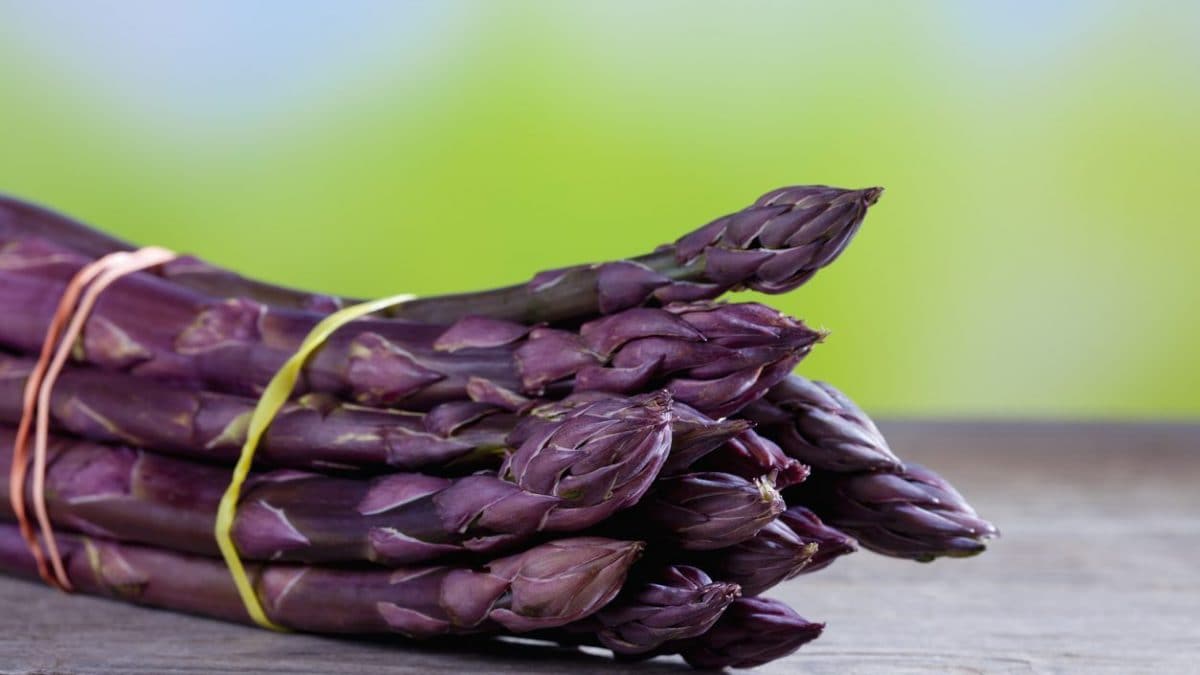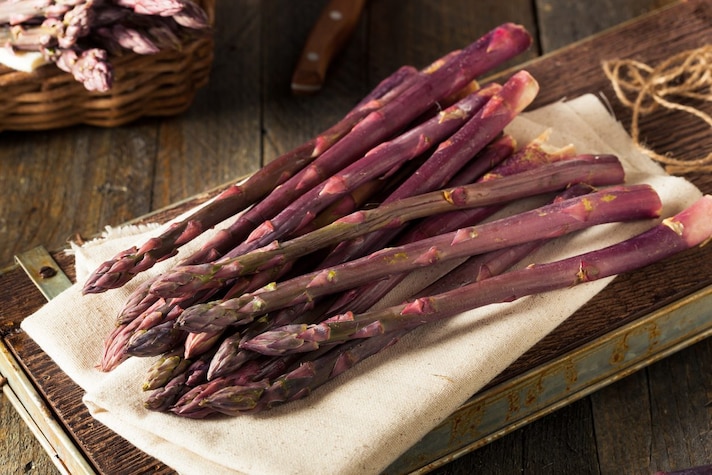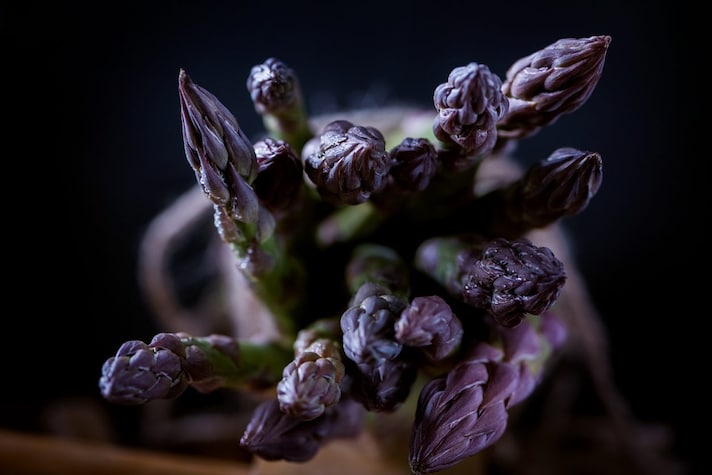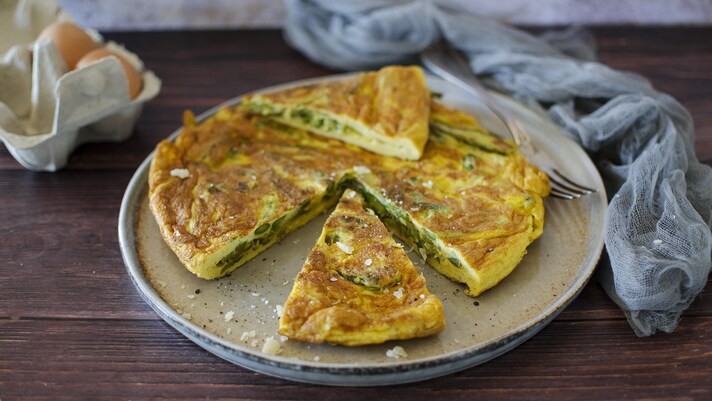
You are used to buying and eating green asparagus, but in reality there are many different varieties of this versatile and tasty vegetable, each with its own characteristics. One of the most prized, so much so that it is much loved by haute cuisine chefs, is purple asparagus, whose scientific name is Asparagus officinalis and whose production area is Albenga, in the province of Savona.
This is a type that, as the name suggests, is characterized by a bright purple color, medium size, a very tender and buttery consistency and a very sweet flavor, but also by a particular genetic mutation that makes it practically impossible to replicate or combine with other species.
The purple asparagus of Albenga is an excellence from many points of view, including that of cultivation, which is done by hand according to ancient tradition between mid-March and the end of June, precisely from the day of St. Joseph (March 19) to the day of St. John the Baptist (June 24). Let's learn more about this small great pride of our agriculture and how to enhance it at its best in the kitchen, where due to its delicacy it requires gentle and non-aggressive cooking.
Purple Asparagus' Characteristics: Why Do They Have This Color?
The most striking feature of the Albenga asparagus is its particular purple color, more intense at the top of the shoots and fading towards the base. But what is this anomalous color due to? The cause is a completely spontaneous genetic mutation that provides this asparagus with a greater number of chromosomes, precisely 40 instead of the 20 normally possessed by other varieties.
The color is therefore part of the genetic heritage of the vegetable, which thanks to its extra chromosomes also has the particularity of being able to reproduce only with itself: no crosses, no hybridizations, despite scientists from all over the world having tried to pollinate it with other species. This makes the Albenga violet a very pure species, which cannot even be cloned due to its poor adaptability to other terrains other than its own.

Be careful, because this characteristic mutation belongs only and exclusively to the Albenga asparagus, while other species called purple, which in reality tend more towards lilac or pink, are “normal” asparagus. How to recognize them? The Ligurian product has a very dark color that, as explained, fades towards the base, the others have a lighter and completely uniform shade.
In addition to its unmistakable purple color, purple asparagus is characterized by its consistency, which is very different from other classic asparagus, particularly creamy, soft and buttery because it contains a lower quantity of fiber, which allows you to eat the vegetable in its entirety, even the white part; the flavor is very sweet, even if there is a very slight bitter aftertaste.
What Are the Properties of Purple Asparagus?
Contrary to what happens in terms of consistency and flavor, from a nutritional point of view purple asparagus does not differ much from the properties that all varieties have: also in this case they are vegetables composed mainly of water and particularly low in calories, which is why they are diuretic and purifying. The presence of uric acid and asparagine, in fact, stimulates the elimination of excess fluids and promotes the natural activity of the kidneys.

Like green and white asparagus, purple asparagus also contains vitamins and mineral salts, especially calcium, phosphorus, potassium, magnesium and chromium, essential for regulating blood pressure, reducing hypertension and protecting the health of the cardiovascular system. Folic acid, vitamin B12 (able to relieve tiredness and fatigue) and rutin and quercetin, with important anti-inflammatory and antioxidant actions, are also present in good quantities.
How to Use Purple Asparagus in The Kitchen
Purple asparagus in general, and even more so the one from Albenga, has the particularity of being very delicate precisely because of its tender consistency. This makes them very delicious, but also easy to ruin during cooking: the ideal is a short and light cooking, for example it is perfect to boil them or steam them (about 10 minutes of cooking in both cases are enough), then season them with extra virgin olive oil and use them as a side dish for dishes with delicate flavors such as fish (ideal sea bream or salmon) or white meats.

Once blanched, purple asparagus is not only a side dish, but you can also use it for tasty cream soups or, even better, to prepare a creamy risotto or to season a pasta dish. Like all asparagus, purple ones also go very well with eggs: try them with the classic fried egg or in an inviting omelette.
;Resize,width=767;)
